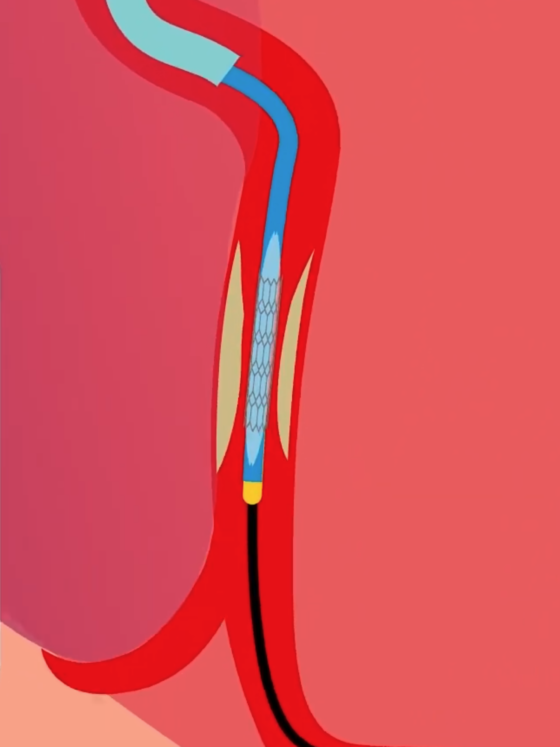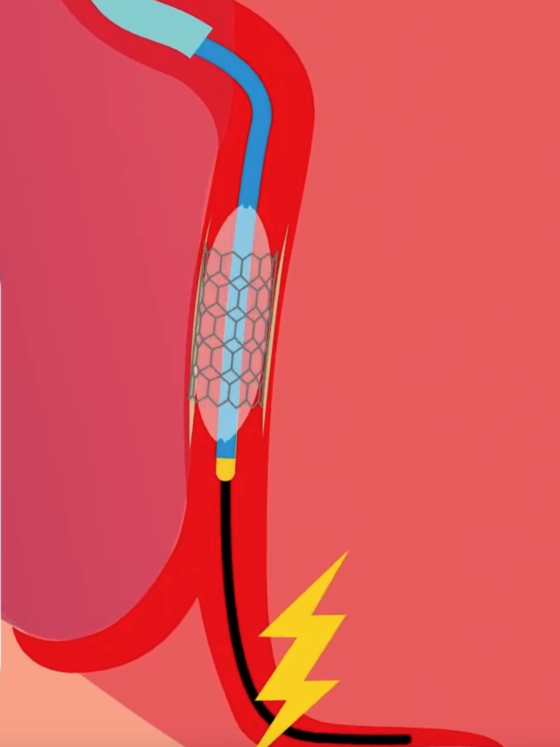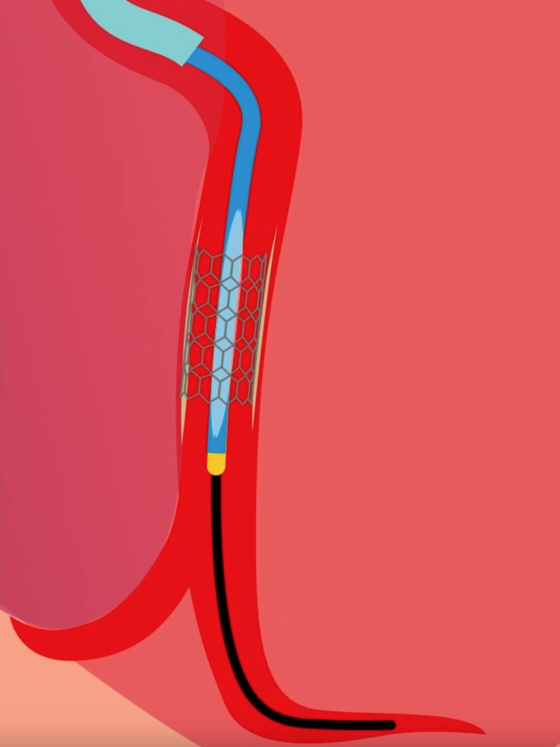Heart valves and coronary arteries pathologies
Heart valves pathologies and coronary arteries are more and more common in our western lifestyle societies.
2% of the adult population and 10 to 15% of the population over 75 years of age is carrier of a heart valve pathology.
The most common pathologies of these valves and arteries are narrowing. This narrowing can have different sources (malformation, infections, rheumatism, degeneration) and slows the blood passage. While they may be asymptomatic, these pathologies generally induce palpitations, shortness of breath, chest pain or discomfort and can lead to death.
It exists two types of surgical procedures to treat the narrowing pathologies:
- Open heart surgery
- Percutaneous cardiovascular interventions, also called percutaneous surgery or endovascular surgery
The two main types of percutaneous cardiovascular interventions are:
- Percutaneous Coronary Intervention (PCI)
- Transcatheter Heart Valves (THV)
Percutaneous cardiovascular interventions allow the interventional cardiologist to reach the affected area and to treat it through vascular routes of access such as femoral or radial routes.
These procedures have the advantage to be much less invasive and traumatic for the patient than the open-heart surgery. That is why they are more and more practiced: 135 000 TAVI procedures* and 5 million PCI procedures have been practiced in 2018 and the figures are still growing.
*Source TAVI: European Heart Journal (2018) 39, 2635–2642 doi:10.1093/eurheartj/ehy107
What is TAVR?

TAVR stands for Transcatheter Aortic Valve Replacement
TAVR is the most practiced procedure within the Transcatheter Heart Valves (THV) interventions. THV also includes Transcatheter Tricuspid Valve Repair (TTVR) and Transcatheter Mitral Valve Repair (TMVR).
Aortic, Tricuspid and Mitral are three cardiac valves which may be replaced following the same kind of advanced procedure. The procedure consists in replacing the narrowed heart valves without the need for open heart surgery but with the use of a long narrow tube called a catheter.
TAVR procedure was invented and developed by French cardiologist Pr Alain Cribier who did the first implantation on human in April 2002. Another French cardiac surgeon Pr Jacques Seguin developed at the same time another TAVR device which was the first to be CE marked in 2007.
How does the TAVR procedure work?
The catheter is inserted into a large blood vessel in patient’s groin or through a small incision in his chest and guided to the aortic valve opening in the heart. The valve is, for its part, squeezed around or inside the catheter.
The new valve is deploying, using a balloon and taking over the diseased valve. Once the new valve is implanted, the catheter is removed. The new valve starts working right away.
TAVR, TTVR and TMVR are a much less invasive alternative, where patients are, in most cases, under local anaesthetic and awake.
This procedure dramatically cuts the length of recovery and patients are up and about within a few hours of their procedure. Most patients only need to stay one night in hospital.
What is PCI?



Percutaneous coronary intervention (PCI), also known as coronary angioplasty, is a nonsurgical technique for treating obstructive coronary artery disease.
The procedure consists in using a thin flexible tube, known as a catheter, inserted into an artery. The catheter integrates a balloon which is inflated to dilate the narrowed artery. Most of the time, a small structure, called a stent, is put in place to keep the artery open at the right diameter.
PCI improves blood flow, thus decreasing heart-related chest pain, making the patient feels better and increasing his ability to be active.
This procedure lengths from 45 minutes to 2 hours on average, and patients are up and about within a few hours of their procedure. Most patients only need to stay one night in hospital.


